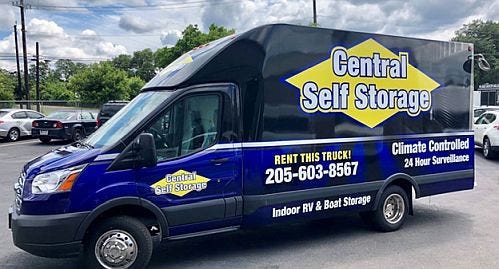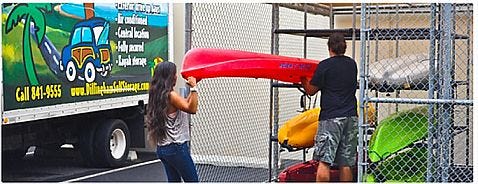Choosing Add-On Profit Centers to Complement Your Core Self-Storage Business
Add-on products and services are becoming more common in the self-storage industry, but few operators go beyond the basics, like moving and packing supplies. There’s so much more you can offer! Get ideas for choosing business complements that’ll help you draw more customers and generate greater revenue.

Self-storage operation has changed a great deal over the last 40 years. One area of particular growth has been add-on profit centers. Buy offering products and services that complement your core business, you won’t only draw more customers and expand awareness of your facility, you’ll drive additional revenue. The practice has become so common in the industry that management offices are now designed to be larger to accommodate ancillary sales.
The problem is many self-storage operators stop at the basics: locks, boxes and other moving supplies. Of course, it’s important to meet customers’ packing and storage needs, but there’s so much more you can offer! To maximize income, it’s important to create a mix of profit centers that suit your customer base and business. Following are some ideas.
Options to Consider: Industry Staples
To home in on the add-on products and services that’ll work best for your self-storage business, you need to understand your market and customers. What will complement your existing operation and resonate with prospects and tenants?
The most obvious approach is to offer items that attract a broad audience and meet common community needs. This is why so many self-storage operators sell moving and packing supplies, tenant insurance and protection plans, and truck rentals. These have wide appeal, regardless of most market characteristics. Let’s look at just a few of these staples and how you can maximize them.
Retail sales. These are very popular in self-storage. Most facility operators sell locks, boxes, bubble wrap, dish packs, mattress covers, markers, labels and other items that help customers pack and store their goods. The trick is to ensure you’re making it easy for people to buy—and your staff to sell—these items.
I once audited a large facility that sold only $45 worth of boxes in a three-month period. This seemed really low given the size of the property until the manager informed me that all the supplies were set up in a 10-by-20 unit across from the office. The unit stayed closed and out of sight from customers unless someone asked to buy a box. That’s a great example of how not to grow your on ancillary income!
Truck rentals. Offering the free use of a rental truck at move-in is a great way to lease up a new self-storage property, but once the store is stabilized, that truck isn’t used very often. At that point, consider renting it to tenants who are moving out or anyone in the community at large. You can offer it on a daily or even hourly basis. If you wrap the truck with graphics to promote your facility, it also becomes a moving billboard people can see all over town!

Records storage and management. This can be a sizable business, depending on the extent of your commitment. You just need to be careful, as it has the potential to grow too big for your operation.
The simple approach is to dedicate a portion of your storage units for this purpose and market them to local businesses. You can even equip them with shelving for rent or purchase, which makes it easy for customers to “stack and pack” their boxes and keep them safe from tumbling.
To truly capitalize on this opportunity, however, it’s best to build a warehouse and implement a barcode system for easy box storage and retrieval. Some operators even offer document shredding and scanning. This is definitely more labor-intensive than regular self-storage.
Other widely used profit centers in this industry include boat and RV storage, wine storage, tenant insurance and tenant-protection plans. I won’t expand on those here, but they can all make a great complement to storage-unit rentals in the right market.
More Options: Outside the Box
Beyond the abovementioned basics, there are many other add-on profit centers that work well in a self-storage environment. Again, think about your audience and market. What can people in your area really use? What’s unique to your region? For example, Dillingham Blvd. Self Storage in Honolulu caters to the needs of its beach-loving customers by offering surfboard and kayak storage!
One option that’s frequently overlooked is vending machines for drinks and snacks. All customers get thirsty, especially during a move! Why not capitalize on this need to make a profit? This solution could work on any property.

Sometimes, depending on your location, you may need creative ways to lure customers to your property. One is mailbox rentals. I once managed two facilities in the same city that offered this service. One had amazing drive-by traffic and the other was in a residential area. Amazingly, the latter did much more mailbox business. We attributed this to an uptick in home mailbox break-ins and “porch pirates,” but there are all sorts of reasons why people might desire an extra mailbox. Never underestimate the need for privacy!
Installing a package-delivery lockbox for Amazon, Fedex or UPS is another option that can bring in foot traffic. You can put the lockers outside your building or in a secure indoor area, so long as it’s accessible to the public. Though these don’t generate revenue, they bring people to your property, where they might decide to rent a unit or buy one of your other add-ons.
Another ancillary that can attract public users is a pack-and-ship service. Lots of individuals and businesses sell things online these days, and they need places to send packages. By becoming a hub for this activity, you can bring in extra revenue and attract future tenants, plus the workload can fit well at stores that tend to be slow. If you have self-storage customers who are eBay or Etsy sellers, remind them that they can ship through you and store their inventory at your site!
To help your seller customers even further, consider setting up a photo room where they can take pictures of items they plan to list. All you need is a corner of your management office or a vacant unit. You can even provide a lightbox setup or background that’ll help them present their goods in the best possible manner. You’d be surprised how many people sell things online and don’t have a suitable place to take photos. Rent this space by the hour or the day.
Finally, it’s worthwhile to explore office services. I’m talking about things like laminating, photocopying and even notary. Other option to consider, particularly with so much labor transitioning to remote working environments, is to rent out workstations, small offices and a conference room. Some people are desperate to get out of their homes and into a professional workspace, so these are all in high demand.
Sales and Marketing
No matter what you decide to sell at your self-storage facility, you need to get the word out. Use signage inside and out to let people know what you offer. All ancillaries should be promoted on your website and social media pages as well as in regular customer communications, such as your monthly e-newsletter or rent reminder. Bring up relevant options when presenting your property to new customers, matching your individual offerings to their needs.
Try to get pictures of people using your add-on profit centers and come up with creative ways to get those images in front of prospects. Testimonials are another great way to stimulate interest. Customers love short videos, too, especially on social media.
Think about ways and places to target specific users. For example, small-business owners might need records storage, so why not reach out to them through the local chamber of commerce or newspaper? In some cases, it can be effective to advertise on community bulletin boards.
Community Connection
Creating goodwill within the neighborhood you serve is another factor to consider when choosing add-on profit centers for self-storage. Charitable campaigns and events will bring people to a site. For example, you can host a garage or yard sale, which is always a crowd-pleaser. Passersby will stop whether or not they need anything. It doesn’t matter what kind of market you’re in; folks are always looking for a bargain!
The first time I hosted a yard sale, I was extremely skeptical, but we partnered with an animal shelter, which did most of the advertising. The manager let our tenants know they could sell goods out of their units, too. We charged them $15 to rent a 6-foot table, which they had to reserve and pay for in advance. Much to my surprise, we had 85 tenants participate and more than 300 guests attend! We also rented five units that day—three to new customers and two to current tenants who bought a bunch of stuff from other sellers!
Honestly, it all boils down to convenience. Customers want products that are fast and easy. They want friendly service and to support local business. Make it easy for them. Welcome them in and offer what they need.
Take a Chance!
As you’ve seen throughout this article, there are a plethora of opportunities to capture ancillary self-storage revenue, directly or indirectly. Whatever add-ons you offer, the goal is to generate new sales leads, rentals and revenue. Above are just a few I’ve used over the years. Look around your community to see what products and services you might be able to offer to enhance your business and assist customers with their needs. Remember, nothing ventured, nothing gained!
Carol Mixon-Krendl is the owner of SkilCheck Services Inc., which provides self-storage auditing, mystery shopping, development and operations consulting, and sales training. She’s owned and managed more than 35 storage locations in the West and is a frequent speaker at industry tradeshows. She’s also written more than 100 articles for various publications and has served on state and national self-storage association boards. For more information, call 800.374.7545; email [email protected].
About the Author(s)
You May Also Like





